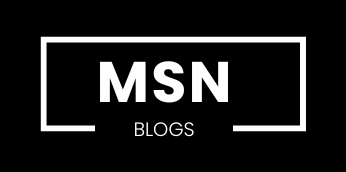Blog
How Long Does it Take to Deliver a CNC Router Wood Rapid Prototyping?

Nowadays, time is often of the essence, especially when creating prototypes. Combining CNC router technology and rapid prototyping has revolutionized the process for those working with wood. This allows for quicker turnaround times and more precise results. But how long does it take to deliver CNC machined wood prototypes?
Some projects may be completed in hours, while more intricate designs could take several days. By understanding these variables, you can better manage your expectations and schedule your projects more effectively. Keep reading this article as we delve into the details of CNC router wood rapid prototyping, exploring what it entails and the key considerations that affect delivery times.
What Is CNC Routing for Wood?
CNC routing for wood is a modern manufacturing process that combines the precision of computer numerical control (CNC) technology with traditional woodworking techniques. This method uses a CNC router, which follows programmed instructions to cut, carve, and shape wood with high accuracy and efficiency. CNC routers have become indispensable tools in the woodworking industry, revolutionizing how manufacturers design and fabricate wood products.
How CNC Routers Work
As the name suggests, the CNC router machine comes equipped with a router bit that moves along multiple axes—typically X, Y, and Z—guided by a computer program. The first step involves designing a digital model using computer-aided design (CAD) software. This design is then converted into a computer-aided manufacturing (CAM) file containing the instructions the CNC router will follow.
Once the design is ready, the operator sets up the CNC router with the appropriate tools and materials. Then, the machine’s router bit moves along the programmed paths, cutting and shaping the wood according to the design specifications. This automated process allows for high precision and repeatability, ensuring each piece is identical.
Materials and Tools Used in CNC Routing for Wood
Experts use various types of wood and tools in CNC routing, each selected based on the specific requirements of the project:
Types of Wood
Common woods used in CNC routing include hardwoods like oak, maple, cherry, and softwoods like pine and cedar. Each type of wood has unique properties that can affect the routing process and the final product.
Router Bits
The choice of CNC router bit is crucial for achieving the desired results. Bits come in various shapes and sizes, including straight, spiral, and specialty bits, for specific tasks like engraving or creating dovetail joints.
Applications of CNC Routing for Wood
CNC routing applies in various woodworking applications, showcasing its versatility and importance in the industry:
Furniture Making
CNC routers are widely used in the furniture industry to create precise and complex designs for tables, chairs, cabinets, and more. The ability to produce intricate patterns and joints with accuracy makes CNC routers invaluable for furniture manufacturers.
Custom Woodworking
CNC routers enable artisans and craftsmen to bring their visions to life for bespoke projects requiring unique designs. Custom cabinetry, artistic carvings, and personalized décor items are a few examples of what they can achieve.
Sign Making
CNC routers are also used to create detailed and durable wooden signs. The precision of the router allows for intricate lettering and graphics, making it ideal for commercial and residential signage.
What Is Rapid Prototyping?
Close-up image of wood cutting by a milling machine with a pile of sawdust
Rapid prototyping encompasses techniques designed to swiftly create a scale model or part using three-dimensional computer-aided design (CAD) data. This process is integral in product development, allowing designers and engineers to quickly develop prototypes to test form, fit, and function. Rapid prototyping significantly reduces the time between initial design and production, making it an essential tool in various industries.
Methods of Rapid Prototyping
Several rapid prototyping methods are used today, each with advantages and limitations. Here are some of the most common techniques:
3D Printing (Additive Manufacturing)
This is the most widely known method, where the material gets deposited layer by layer to build the prototype. Techniques under this category include Stereolithography (SLA), Selective Laser Sintering (SLS), and Fused Deposition Modeling (FDM). 3D printing is highly versatile and can use various materials, including plastics, resins, and metals.
CNC Machining
This subtractive method removes material from a solid block using computer-controlled tools. CNC machining is known for its precision and is often used to create prototypes of metals and wood, providing a more accurate representation of the final product.
Laser Cutting and Engraving
This technique uses a laser to cut or engrave materials, suitable for creating detailed parts and components. It is often used with other methods to add intricate details to prototypes.
Injection Molding
This method entails injecting molten material into a mold to form parts. While typically used for mass production, this method applies to rapid prototyping with quick mold-making techniques.
Key Considerations for a CNC Router Wood Rapid Prototyping
CNC router machine creating a layout in woodwork industry
When planning a CNC router wood rapid prototyping project, various factors can significantly impact the final result. Understanding these key considerations will help you streamline your process, save time, and ensure your prototype meets your expectations.
Check the essential aspects you need to keep in mind below:
1. Design Complexity
The complexity of your project’s design is a primary factor affecting both the time and cost of your project. Intricate designs with detailed carvings and fine features require more time and precision, which can extend the overall prototyping process. On the other hand, fabricators can quickly complete simple designs with straightforward cuts and shapes. Hence, simplifying your design where possible can save time and reduce costs. Additionally, using CAD software efficiently to create clear and detailed digital models helps the CNC router follow the intended paths precisely, reducing the need for adjustments during the routing process.
2. Tooling and Router Bits
The choice of tooling and CNC router kit directly impacts the quality and speed of your prototype. Different router bits perform specific tasks, such as cutting, engraving, or shaping. Thus, it is vital to choose the right bit for your design. For instance, straight bits are suitable for cutting, while V-groove bits are better for detailed engraving. High-quality bits provide cleaner cuts and last longer, so investing in good bits and keeping them well-maintained can improve the finish of your prototype and reduce wear on the CNC router.
3. Material Selection
Various types of wood have distinct properties, such as hardness, grain, and moisture content, which can impact how they get routed. Commonly used woods in CNC routing include hardwoods like oak, maple, and cherry, which are known for their durability and fine finish. At the same time, they are hard to cut and require more processing time. Softwoods like cedar and pine are easier to machine and faster to cut, making them ideal for less intricate designs. More so, engineered woods like plywood and MDF are often used for their uniformity and stability, although they can produce more dust and require specific router bits.
4. Machine Calibration and Setup
Adjusting the feed rate and spindle speed according to the material and bit used is also crucial. This is because incorrect settings can lead to poor cuts and increased wear on the machine. Therefore, proper calibration and setup of your CNC router are essential to achieve accurate and high-quality results. Further, firmly securing your wood piece to prevent movement during routing is crucial, as proper clamping ensures consistency and accuracy in your cuts.
5. Production Volume
The number of prototypes you need can also affect the overall time and cost. Single prototypes may allow for more detailed and careful routing, while more significant production runs benefit from optimized processes and setups. Considering this, you can refine your routing process based on the first few prototypes to streamline production for larger runs.
6. Post-Processing Requirements
After the CNC routing process, additional steps, such as sanding, assembly, painting, or applying finishes, may be required to finish the prototype. CNC routing can leave rough edges that need to be sanded for a smooth finish. If your prototype consists of multiple pieces, planning for the time required to assemble and test the final product is essential. Moreover, applying paint, varnish, or other finishes can enhance the appearance and durability of your prototype.
Conclusion
In a nutshell, successfully delivering a CNC router wood rapid prototyping project involves several key considerations. From simplifying design complexity to selecting suitable materials and tooling, each step impacts the overall outcome. Ensuring proper machine calibration and managing production volume and post-processing needs are essential for achieving accurate and efficient results. By understanding and managing these factors, you can optimize your CNC routing process and achieve a quality prototype that meets your expectations.
At Zintilon, we value and understand the importance of precision and efficiency in your prototyping projects. Whether you want to refine your designs or bring a new concept to life, our expert team is here to help. Contact us today to learn more about our top-tier CNC routing services and discover how we can help you achieve your project goals effortlessly.
Blog
Alaya AI: Transforming Data Collection and AI Training

Introduction
Artificial Intelligence (AI) has seen remarkable growth over the past few years, and one of the key driving forces behind this progress is the availability of high-quality data. Alaya AI is an innovative platform that bridges the gap between data collection and AI model training, leveraging decentralized networks and community participation. This article delves into what Alaya AI is, how it works, its benefits, applications, and future prospects.
What is Alaya AI?
Alaya AI is an AI-powered platform designed to enhance data collection and annotation through a decentralized network. It leverages blockchain technology and community participation to create an efficient, scalable, and trustworthy AI training environment. The platform enables users to contribute data and AI model improvements while being rewarded through an incentive-based system.
Alaya AI integrates crowd intelligence with machine learning, ensuring high-quality data labeling, annotation, and validation. By decentralizing the data collection process, it minimizes biases and enhances the robustness of AI models across various domains.
How Alaya AI Works

1. Decentralized Data Collection
Alaya AI enables users from around the world to contribute data in various formats, including text, images, audio, and video. The decentralized nature of the platform ensures a diverse and unbiased dataset, which is crucial for training accurate AI models.
2. Blockchain-Powered Security
Blockchain technology is at the core of Alaya AI, ensuring transparency and security in data transactions. This prevents tampering and ensures that all data contributions are verifiable and traceable.
3. Incentivized Participation
Users who contribute data, annotate datasets, or validate AI models are rewarded with tokens. This incentivization model encourages a high level of engagement and ensures that the data provided meets quality standards.
4. AI Training and Model Improvement
Once data is collected and verified, Alaya AI uses it to train machine learning models. The platform employs advanced AI techniques such as deep learning.
5. Real-Time Feedback and Enhancement
Alaya AI continuously updates its AI models through community feedback. This iterative process ensures that AI systems remain accurate and relevant to changing user needs.
Benefits of Alaya AI
1. High-Quality Data Collection
Alaya AI’s decentralized approach ensures that data is collected from diverse sources, reducing biases and increasing accuracy in AI model training.
2. Security and Transparency
By leveraging blockchain technology, Alaya AI maintains transparency in data contributions and transactions. This enhances trust among users and prevents data manipulation.
3. Cost-Effective AI Training
Traditional AI training methods require substantial financial investments. Alaya AI reduces these costs by crowdsourcing data collection and annotation.
4. Global Collaboration
The platform enables people from different parts of the world to contribute to AI advancements, fostering a collaborative and inclusive AI ecosystem.
5. Ethical AI Development
Alaya AI promotes ethical AI practices by ensuring diverse and unbiased data contributions, preventing discriminatory AI outputs.
Applications of Alaya AI
1. Autonomous Vehicles
Self-driving cars require vast amounts of labeled data for navigation, object detection, and decision-making. Alaya AI helps in collecting and annotating this data to improve autonomous vehicle technology.
2. Healthcare and Medical Research
AI models in healthcare rely on annotated medical images, patient records, and diagnostic data. Alaya AI facilitates secure and ethical data collection for improved medical AI applications.
3. Language Processing (NLP)
Chatbots, voice assistants, and translation tools require extensive training data. Alaya AI contributes to the NLP domain by collecting diverse language datasets.
4. Smart Surveillance
AI-driven security systems need high-quality video and image datasets for facial recognition, anomaly detection, and crime prevention. Alaya AI provides verified data to enhance smart surveillance applications.
5. Finance and Fraud Detection
AI-based fraud detection relies on transaction data and behavioral patterns. Alaya AI supports the financial sector by aggregating and verifying fraud-related datasets.
Challenges and Future Prospects
Challenges
- Data Privacy Concerns: Ensuring user data is anonymized and protected remains a challenge in decentralized data collection.
- Scalability Issues: Managing large-scale participation while maintaining data quality can be complex.
- Regulatory Compliance: Different countries have varied regulations on data collection and usage, which may impact Alaya AI’s operations.
Future Prospects
Despite these challenges, the future of Alaya AI looks promising. With advancements in blockchain technology, AI ethics, and decentralized applications, Alaya AI is expected to expand its influence across industries. Future updates may include:
- Improved AI Model Validation: Enhanced techniques for verifying AI model performance based on real-world feedback.
- Wider Industry Adoption: Increased collaboration with businesses, governments, and research institutions.
- Integration with IoT and Edge Computing: Expanding Alaya AI’s capabilities to collect and process real-time data efficiently.
Conclusion
Alaya AI is revolutionizing the way data is collected and used for AI training. By leveraging decentralized networks, blockchain security, and incentivized participation, it ensures high-quality, diverse, and ethical AI development. As AI continues to evolve, platforms like Alaya AI will play a crucial role in shaping a more transparent, unbiased, and efficient AI ecosystem.
FAQs
1. What makes Alaya AI different from other AI training platforms?
Alaya AI stands out due to its decentralized approach, blockchain security, and incentive-based data collection model, ensuring transparency and high-quality data.
2. How does Alaya AI ensure data quality?
Data submitted to Alaya AI undergoes multiple validation steps, including peer reviews and AI-assisted verification, to maintain high accuracy and reliability.
3. Can anyone contribute to Alaya AI?
Yes, Alaya AI allows global participation. Users can contribute data, annotate datasets, or validate AI models and earn rewards in return.
4. What industries benefit from Alaya AI?
Industries such as healthcare, finance, autonomous vehicles, surveillance, and NLP applications benefit significantly from Alaya AI’s data collection services.
5. Is Alaya AI secure?
Yes, Alaya AI uses blockchain technology to ensure data transparency, security, and immutability, preventing tampering or unauthorized modifications.
With its innovative approach, Alaya AI is paving the way for a more efficient and ethical AI-powered future.
Also read: Bizhunet
Blog
Why You Should Take a Solar Power Station on Your UK Road Trip
Planning a road trip can be an exhilarating adventure, especially across the picturesque landscapes of the United Kingdom. Whether you’re navigating the rolling hills of the Scottish Highlands or exploring the historic coastal towns of Cornwall, one thing that can significantly enhance your experience is a reliable power source. This is where a solar power station, like the Jackery Explorer 500 Portable Power Station, becomes an essential travel companion.
The Benefits of Solar Power Stations for Road Trips
1. Eco-Friendliness
Solar power stations provide a clean and renewable source of energy, reducing your carbon footprint. Unlike gasoline generators, they produce no emissions, which is not only better for the environment but also ideal for maintaining the purity of the natural settings you’ll be enjoying.
2. Convenience and Portability
With compact and lightweight designs, solar power stations are easy to transport and use. They can fit comfortably in your vehicle without taking up much space, making them perfect for road trips where every inch of space counts.
3. Versatility
A solar power station can power everything from smartphones and laptops to cameras and drones. This means you can keep your devices charged and ready to capture the beauty of your surroundings without the need for multiple charging adapters and external batteries.
4. Silence and Safety
Solar power stations operate silently, ensuring that you can enjoy the tranquillity of your surroundings without the disruptive noise associated with traditional generators. Moreover, they are safe to use and do not generate heat, reducing the risk of accidents.
Introducing the Jackery Explorer 500 Portable Power Station
Key Features:
– High Capacity: the Jackery Explorer 500 Portable Power Station is equipped with a 518 Wh lithium battery, providing ample power for all your needs during the trip.
– Pure Sine Wave Inverter: It features a 500 watt AC outlet that uses a pure sine wave inverter. This means it can safely power sensitive electronic devices by providing clean and stable power akin to what you would get from a household outlet.
– Portability: It stands out as one of the lightest and most portable generators in its class, making it exceptionally easy to carry and stow away in your vehicle.
– Versatile Powering Options: Besides the AC outlet, it includes ports for DC and USB devices, allowing you to charge multiple devices simultaneously.
Why Jackery Explorer 500 is Essential for Your Road Trip:
Choosing the Jackery Explorer 500 Portable Power Station for your road trip in the UK means ensuring you have a reliable, safe, and efficient power source that can handle the diverse needs of modern travel. Whether it’s keeping your gadgets charged, powering a cosy roadside picnic, or even handling emergency situations with ease, the Jackery Explorer 500 Portable Power Station has got you covered.
Conclusion
In conclusion, incorporating a solar power bank like the Jackery Explorer 500 Portable Power Station into your road trip essentials list can profoundly enhance your travel experience. It not only provides convenience and utility but also contributes to a more sustainable and environmentally friendly adventure. So, pack up your Jackery, hit the road, and enjoy the scenic beauty of the UK without ever having to worry about running out of power!
Blog
Chris Level Has The Best Jawline, But Trending Not For It
Chris Level: The Jaw-Dropping TikTok King with a Sharp Jawline and Sync Licensing Success
Hold on tight, because the world is about to be introduced to a name you’re going to remember—Chris Level. This isn’t just a guy with an unbelievable presence; this is a man with a jawline that could cut glass. Seriously, his sharp features might as well be a work of art, sculpted by the gods of aesthetics. But it’s not just his chiseled face that’s making waves—Chris Level is taking over TikTok in 2025 and leaving his mark on the sync licensing world.
First off, can we talk about that jawline? It’s not just a sharp contour—it’s like the pinnacle of perfection. From every angle, his face is the definition of symmetry. Instagram influencers and aspiring models are probably praying for whatever genetic blessing Chris was gifted with. Seriously, we’re talking jawline goals that belong in a museum. Forget filters—Chris is the original masterpiece. If there’s a “Best Jawline of 2025” award, he’s already got it in the bag.
But let’s not forget the man behind the look. Chris Level is slaying the sync licensing game like it’s nobody’s business. With his killer content and creative genius, he’s become a force to be reckoned with on TikTok, and the music industry is buzzing. Trending on TikTok isn’t just about the dance moves anymore—it’s about making real waves, and Chris is doing that effortlessly. From viral trends to captivating videos, he’s scoring big with tracks that are getting snatched up for everything from commercials to films.
You might think a handsome face is all it takes to get attention, but Chris is proving there’s so much more going on. His deep understanding of what people want to hear, mixed with his ability to blend music seamlessly into today’s digital culture, has made him a sync licensing powerhouse. He’s one of those rare talents who not only knows how to create tracks that resonate with the TikTok crowd but also has the business savvy to get those tracks placed in major media. It’s no wonder he’s taking over the industry.
So, here we are in 2025, and Chris Level isn’t just a pretty face—he’s a trendsetter, an artist, and a business mogul in the making. You better believe this is just the beginning. If you haven’t already, start paying attention to Chris Level. His jawline is going to lead the charge to even bigger things, and the sync licensing world hasn’t seen anything like this before. Get ready for more, because Chris is only getting started.
-

 Sports7 months ago
Sports7 months agoNepal National Cricket Team vs India National Cricket Team Timeline
-

 Sports7 months ago
Sports7 months agoCanada National Cricket Team VS Nepal National Cricket Team Match Scorecard
-

 Tech7 months ago
Tech7 months agoTop 13 Instagram Story Viewer Sites
-

 Blog7 months ago
Blog7 months agoThe Importance of Relaxing and Unwinding as a Student
-

 Tech7 months ago
Tech7 months agoUnveiling the Best Special Occasion Cufflinks in the UK
-

 Sports7 months ago
Sports7 months agoIndia National Football Team vs Qatar National Football Team Timeline
-

 Tech8 months ago
Tech8 months agoExplore what AML software can do for your business
-

 Blog7 months ago
Blog7 months ago5StarsStocks: Your Ultimate Guide to High-Performance Investments in 2024
